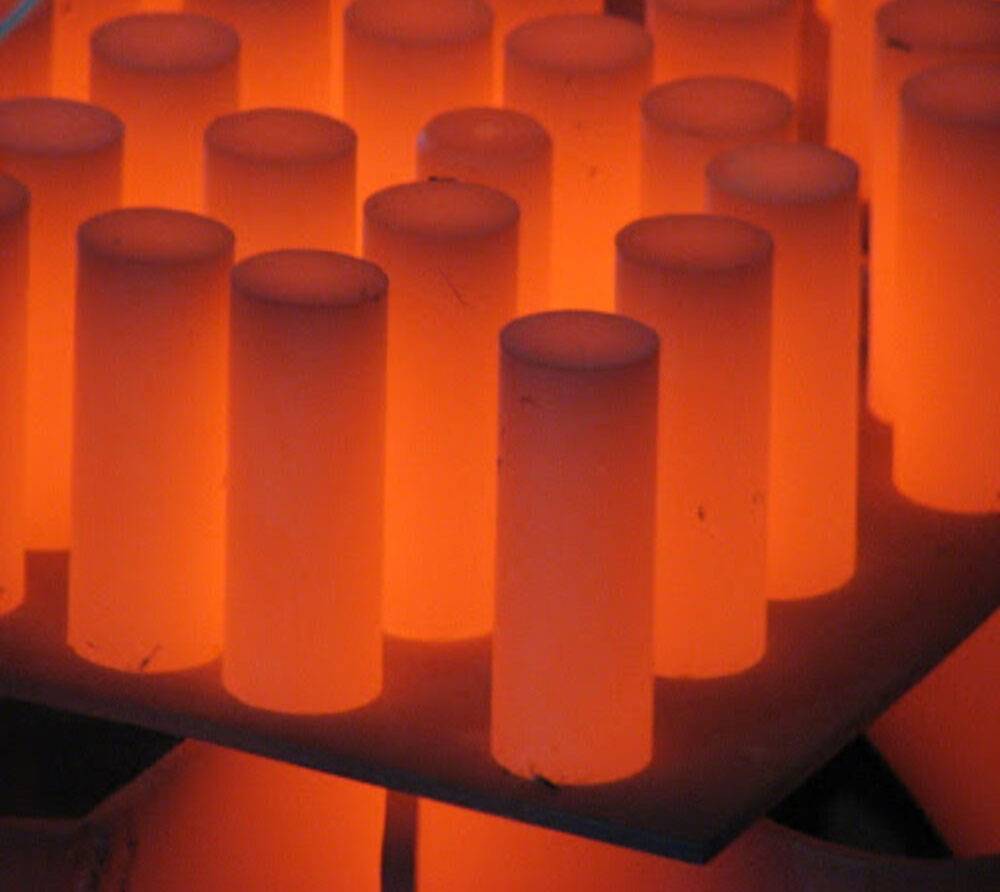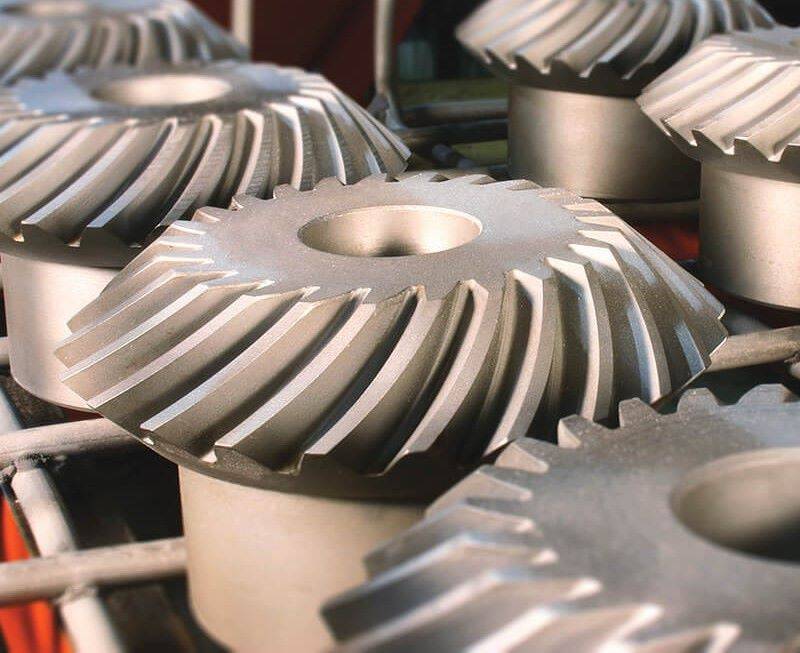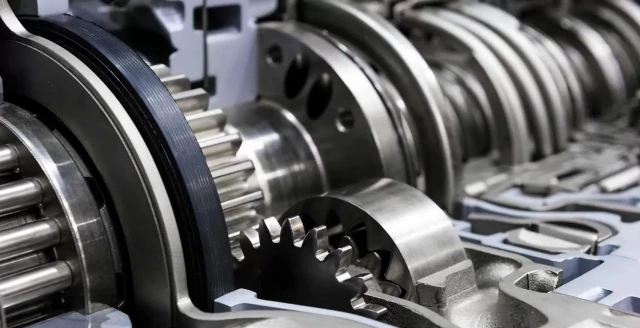Introduction to Carburizing
Basic Principles of Carburizing
Carburizing is a heat treatment process designed to enhance the surface hardness of steel components by introducing additional carbon atoms into the material. This technique is particularly effective for low carbon steels, as it elevates the carbon content at the surface and sub-surface layers, thereby improving their microstructure and mechanical properties. The process involves heating the steel in an environment rich in carbon, allowing the carbon to diffuse into the metal. The depth of carbon penetration is influenced by several factors, including the type of steel, the carbon concentration in the atmosphere, the temperature, and the duration of exposure to this temperature.
The actual hardening effect is achieved through a subsequent quenching step, which rapidly cools the carburized part, locking the carbon atoms into the steel lattice. This quenching process is crucial as it transforms the diffused carbon into a hardened surface layer, significantly enhancing the part's wear resistance and load-bearing capabilities.
In practical applications, carburizing can be performed using various methods, such as atmosphere furnaces or low-pressure vacuum furnaces. While the former involves controlling the carbon potential in a mixed atmosphere of hydrocarbon gases and air, the latter utilizes a vacuum environment with carburizing gases like acetylene, offering superior control and efficiency.
Furthermore, carburizing can be strategically applied to selectively harden specific areas of a part, reducing the need for extensive labor and masking processes. This selective hardening can be particularly beneficial in complex components where only certain areas require enhanced hardness. However, the method chosen can impact the overall cost and complexity of the process, with techniques like low-pressure carburizing offering advantages in terms of precision and environmental impact.

Process Variants
The carburizing process can be executed through two primary methods: conventional atmosphere furnaces and low-pressure vacuum carburizing furnaces (LPC).
In conventional carburizing, the process involves the use of atmosphere furnaces where the carbon potential is meticulously controlled using a mixed atmosphere of hydrocarbon gases and air. This method has been widely adopted due to its simplicity and relatively low cost. However, it comes with inherent challenges such as intergranular oxidation (IGO), decarburization, and surface rusting, which can be mitigated through stable control of carbon potential and gas ratios.
On the other hand, low-pressure carburizing (LPC) operates in a vacuum environment, utilizing carburizing gases like acetylene. This method offers several advantages over conventional techniques. LPC provides precise control over the process, leading to shorter cycle times and better uniformity. Notably, LPC eliminates issues such as IGO, ensuring a cleaner and more consistent surface finish. Additionally, technologies like ECM Technologies' ICBP® low-pressure carburizing furnaces employ the Infracarb® process, which alternates between hydrocarbon gas and inert gas for optimal results, further enhancing the precision and efficiency of the carburizing process.
Each method has its own set of benefits and challenges, making the choice dependent on specific application requirements and desired outcomes.
Conventional Carburizing
Atmosphere Furnaces
The conventional carburizing process involves meticulously controlling the carbon potential within a precisely managed atmosphere, typically achieved by blending hydrocarbon gases with air. This controlled environment is created within an atmosphere furnace, a specialized high-temperature device designed to heat materials under specific atmospheric conditions. Unlike conventional furnaces that rely on ambient air, atmosphere furnaces introduce various gases or mixtures to prevent oxidation, decarburization, or other detrimental reactions that can occur when materials are exposed to oxygen or other reactive elements.
Key components of an atmosphere furnace include both box and tube characteristics, making it suitable for large-scale sample manufacturing and experimentation. The furnace features an air inlet and outlet, along with a seal welding system that includes a high-temperature-resistant silica gel seal ring on the furnace door, ensuring excellent sealing. This design allows for the creation of a vacuum or various other controlled atmospheres, albeit with a vacuum effect slightly inferior to that of a tube furnace, which does not hinder its application in carburizing processes.
Challenges and Solutions
In conventional carburizing, several critical issues can arise, including intergranular oxidation (IGO), decarburization, and surface rusting. These problems can significantly impact the quality and durability of the carburized parts. However, these challenges are not insurmountable. Through meticulous control of the carbon potential and precise adjustment of gas ratios, these issues can be effectively mitigated.
For instance, maintaining a stable carbon potential ensures that the carbon content in the steel remains within optimal levels, preventing both excessive carbon absorption and decarburization. Similarly, fine-tuning the gas ratios—such as balancing hydrocarbon gases with inert gases—helps to create an environment that discourages IGO and surface rusting. This approach not only enhances the surface integrity of the parts but also ensures that the mechanical properties of the steel are preserved.

Additionally, continuous monitoring and real-time adjustments during the carburizing process can further refine these controls, leading to more consistent and reliable outcomes. By addressing these challenges proactively, manufacturers can achieve higher quality results and extend the operational life of their carburized components.
Low Pressure Carburizing
Process Overview
The Low Pressure Carburizing (LPC) process operates within a vacuum environment, utilizing carburizing gases such as acetylene to infuse carbon into the surface of metal parts. This method provides a high degree of precision and control over the carburizing process, leading to significantly reduced cycle times compared to conventional techniques. By maintaining a vacuum, LPC minimizes the risk of intergranular oxidation and other surface defects, ensuring a more uniform and consistent result.
Key elements of the LPC process include:
- Vacuum Environment: The absence of air in the vacuum chamber prevents oxidation, which is a common issue in conventional carburizing methods.
- Carburizing Gas: Acetylene is commonly used due to its high carbon content, allowing for efficient and rapid carbon diffusion into the metal surface.
- Precise Control: Advanced control systems in LPC furnaces enable fine-tuning of process parameters, such as temperature and gas flow rates, to achieve optimal results.
This combination of factors not only enhances the quality of the carburized parts but also makes the LPC process more efficient and environmentally friendly.
Advantages Over Conventional Methods
Low Pressure Carburizing (LPC) presents a suite of advantages that significantly outperform conventional carburizing methods. One of the most notable benefits is the complete absence of intergranular oxidation (IGO). Unlike conventional methods, which can suffer from IGO, LPC operates in a vacuum environment, eliminating the risk of surface oxidation and preserving the integrity of the material's microstructure.
Moreover, LPC ensures superior uniformity across the treated parts. The precise control over the carburizing process, facilitated by the use of a vacuum, allows for consistent carbon diffusion throughout the material. This uniformity is crucial for maintaining the mechanical properties of the parts, ensuring that they perform reliably under various conditions.
Control accuracy is another area where LPC excels. The vacuum environment provides an ideal setting for fine-tuning the carburizing parameters, such as temperature and gas concentration. This level of control not only enhances the quality of the final product but also allows for shorter process times, making LPC more efficient and cost-effective compared to traditional methods.
| Advantage | LPC | Conventional Methods |
|---|---|---|
| Intergranular Oxidation (IGO) | Absent | Present |
| Uniformity | High | Variable |
| Control Accuracy | Very High | Moderate |
In summary, LPC's advantages—no IGO, better uniformity, and higher control accuracy—make it a superior choice for industries requiring precise and reliable carburizing processes.
Infracarb® and CBPWin® Technologies
ECM Technologies' ICBP® low-pressure carburizing furnaces employ the Infracarb® process, which alternates between hydrocarbon gas and inert gas to achieve optimal results. This method is particularly effective in the vacuum environment of low-pressure carburizing (LPC), where precise control over the carburizing process is paramount.
The Infracarb® process involves a cyclic sequence where hydrocarbon gases, such as methane or acetylene, are introduced into the vacuum chamber, followed by an inert gas like nitrogen or argon. This alternating cycle ensures that the carbon diffusion into the steel is controlled and uniform, minimizing the risk of issues such as intergranular oxidation (IGO) and decarburization.
Moreover, the CBPWin® technology, integrated into these furnaces, provides advanced control over the carburizing parameters. This software allows for real-time monitoring and adjustment of gas flow rates, temperature, and pressure, ensuring that the process remains within the desired specifications. The result is a carburized surface with enhanced mechanical properties, better uniformity, and higher control accuracy, making it superior to conventional carburizing methods.

Comparison and Conclusion
Advantages of Low Pressure Carburizing
Low Pressure Carburizing (LPC) furnaces bring a multitude of benefits to the carburizing process, making them a preferred choice over conventional methods. One of the standout advantages is the reduced cycle times. This is achieved through the ability to operate at higher temperatures, often exceeding 980°C, which significantly speeds up the carburizing process. Additionally, the modular design of LPC furnaces allows for greater flexibility and scalability, enabling manufacturers to tailor the equipment to their specific needs.
Energy efficiency is another key benefit. LPC furnaces operate in a vacuum environment, which minimizes heat loss and enhances energy utilization. This not only reduces operational costs but also contributes to a cleaner environment by eliminating CO2 emissions. The process also ensures a stable and repeatable outcome, with a narrower range of carburizing layer tolerance, leading to more consistent results.
Furthermore, LPC offers superior control over the carburizing process, particularly in accurate carburizing of narrow holes and blind holes. This precision is crucial for intricate components where traditional methods might fall short. The use of gas as a quenching agent also helps in minimizing quenching deformations, preserving the integrity of the parts.
Lastly, the end product boasts a clean surface with a silver metallic finish, devoid of any scale, which is a testament to the cleanliness and precision of the LPC process. This results in parts that are not only functionally superior but also aesthetically pleasing.
Suitability for Powder Metallurgy
Low-pressure carburizing (LPC) is particularly advantageous for powder metallurgy due to its ability to precisely control process parameters in a controlled, oxidation-free environment. This method not only enhances the mechanical properties of the final product but also significantly reduces distortion, making it a preferred choice for intricate parts.
Key factors such as corrosion resistance, hardness, tensile strength, impact toughness, and fatigue strength are meticulously managed during the LPC process. For instance, stainless steel series 316L, known for its superior corrosion resistance and toughness, can be processed without compromising its inherent qualities. Similarly, copper and its alloys, which are often used in moisture-rich environments, benefit from the LPC's ability to maintain their corrosion resistance and mechanical integrity.
Moreover, the precision offered by LPC is particularly valuable in the production of hand tools, where wear resistance, toughness, and hardness retention are critical. The process ensures that these properties are not only preserved but also enhanced, leading to tools that are more durable and reliable.
In summary, LPC's ability to fine-tune these critical mechanical properties while minimizing distortion makes it an ideal process for powder metallurgy, ensuring that the final product meets the stringent requirements of various industrial applications.
Related Products
- Vacuum Heat Treat and Pressure Sintering Furnace for High Temperature Applications
- Vacuum Hot Press Furnace Machine Heated Vacuum Press
- Vacuum Hot Press Furnace Heated Vacuum Press Machine Tube Furnace
- Vacuum Heat Treat Sintering Brazing Furnace
- Vacuum Heat Treat Furnace with Ceramic Fiber Liner
Related Articles
- How Vacuum Induction Melting (VIM) Transforms High-Performance Alloy Production
- The Ultimate Guide to Vacuum Pressure Sintering Furnace: Benefits, Applications, and Working Principle
- How Vacuum Induction Melting Outperforms Traditional Methods in Advanced Alloy Production
- Exploring Spark Plasma Sintering Furnace (SPS): Technology, Applications, and Advantages
- How Vacuum Induction Melting Ensures Unmatched Reliability in Critical Industries
























